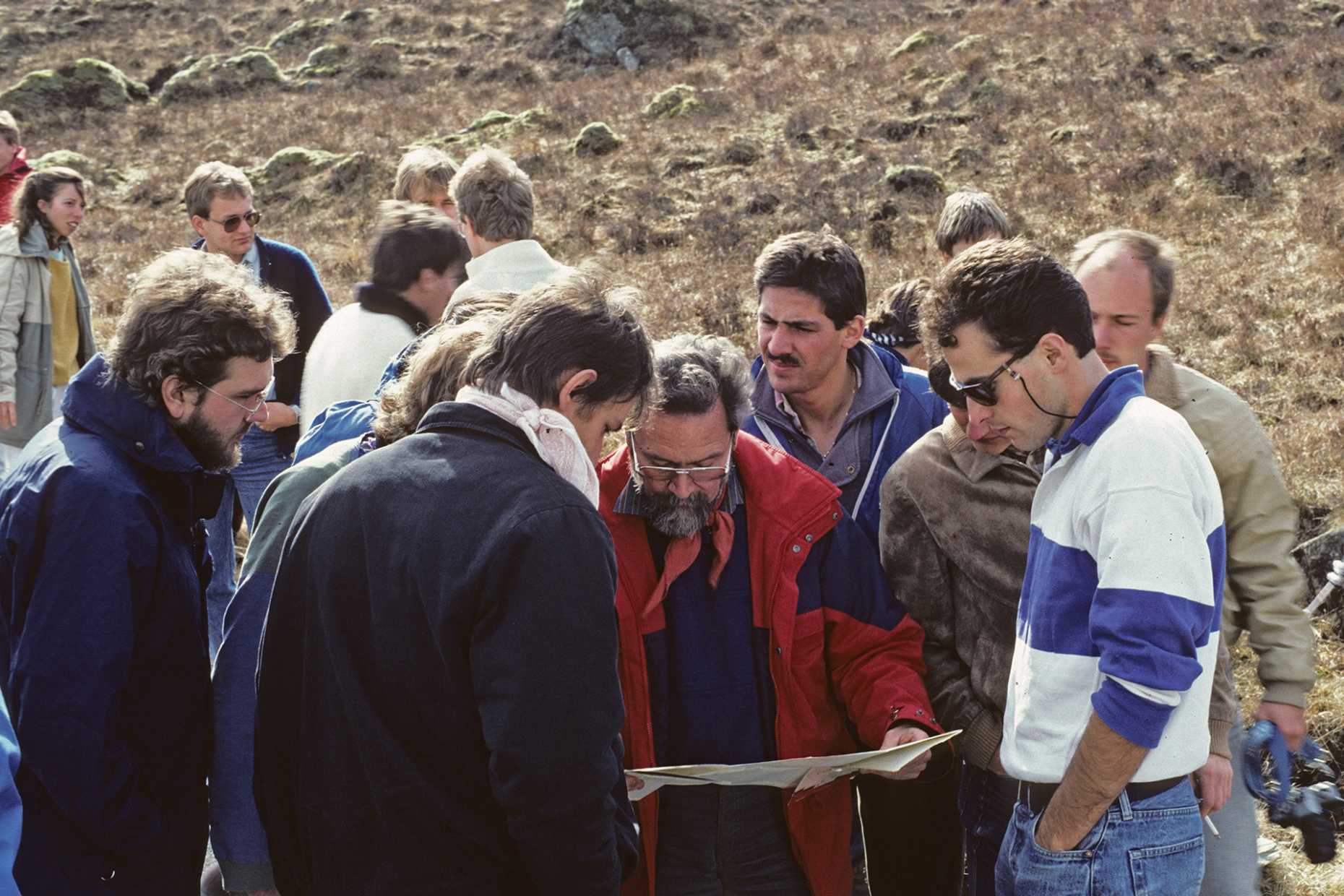In Memoriam: John Ramsay
Obituary
Professor John Ramsay, who contributed so much to field-based structural geology research and teaching over his varied and intense career, died on 12 January 2021, only a few months short of his 90th birthday.

John had a real passion for the geometric beauty of rocks, especially deformed rocks, which he quietly but enthusiastically instilled into a large number of students and colleagues over the years. His photographs of rocks and thin sections, as well as his remarkably detailed and clear field maps, were natural works of art. This was a basic tenet of his whole career, from his PhD at Loch Monar in Scotland to the amazing maps he was still producing in the Glenelg area, also in Scotland, as presented at the poster session of the 2014 Tectonic Studies Group (TSG) meeting in Cardiff. In his books, papers and lectures, John presented methods for the description, analysis, and interpretation of these naturally observed structures that are now fundamental to modern structural geology.
The irony is that John may never have followed a scientific career. His other passion was music, having studied cello in his youth. He had the great fortune of being assigned to the orchestra of the Corps of Royal Engineers during his compulsory military service and it was a difficult decision subsequently whether to continue a career in music or in science.
Luckily for science, he went on to study at Imperial College London, going on to his PhD and joining the teaching staff. During this period, he published his first and still classic textbook “Folding and Fracturing of Rocks” and started a Master's course in structural geology, which was hugely influential and whose attendees are like a who’s who of the next generation of international structural geologists. While at Imperial he was also an initiator of the UK Tectonic Studies Group, organising its first meeting in 1970. He then moved as Professor and Head of Department to Leeds University for a short time before taking up a position in 1977 at ETH Zurich. While continuing to strongly support and personally participate in field-based studies, both in the Alps and internationally, John also instigated laboratories for microstructural analysis and analogue deformation. His love for the field and for natural observation was a fundamental part of his teaching and he introduced and led many field mapping courses and excursions. As well as numerous papers he also, as lead author, eventually published three different volumes of textbooks on “The Techniques of Modern Structural Geology”.

At 60, John retired early with his wife Dorothee to a farm in the Ardèche region of France, where he found more time to devote himself to his earlier passion of music, both teaching and running workshops. He also had time to compose: four of his string quartets are already available commercially, played by the renowned Fitzwilliam String Quartet (external pageMETIER MSV 28528call_made). He still found time for geology, attending conferences, leading excursions and, as noted above, continuing field mapping, especially in the Glenelg area. Unfortunately, John is now no longer with us – he will be missed but very much remembered.
Written by Professor Neil Mancktelow
